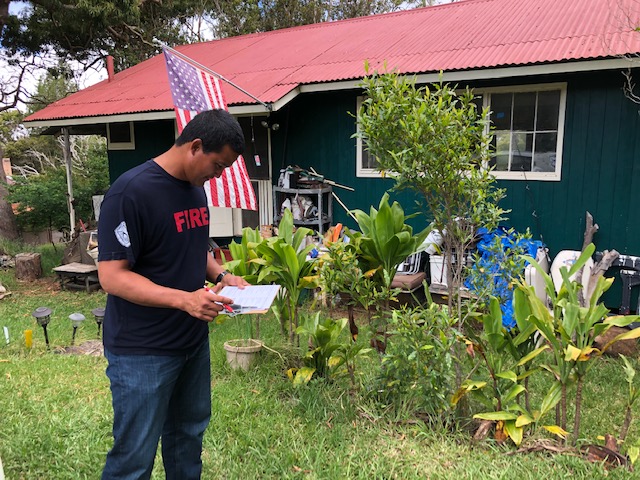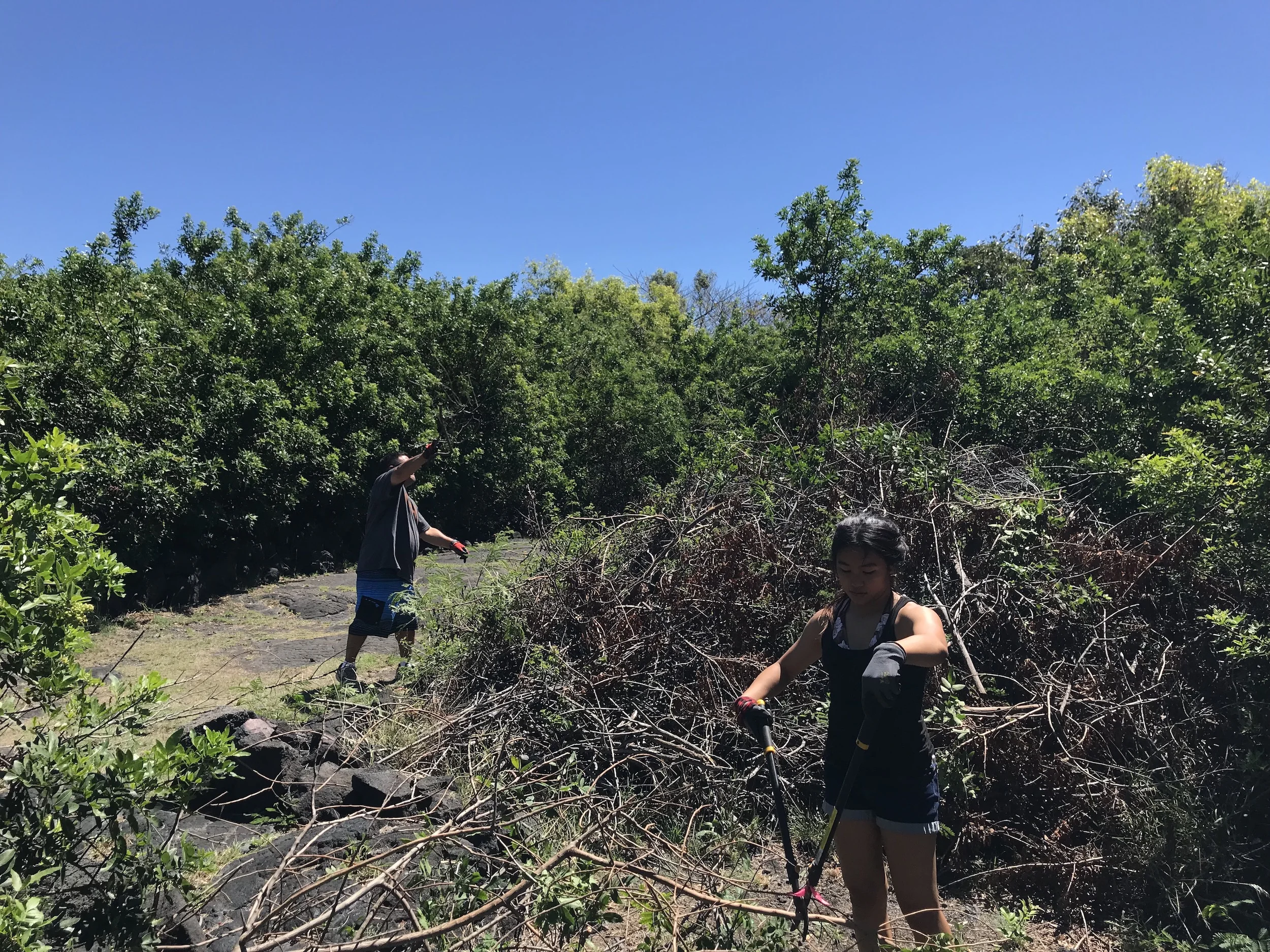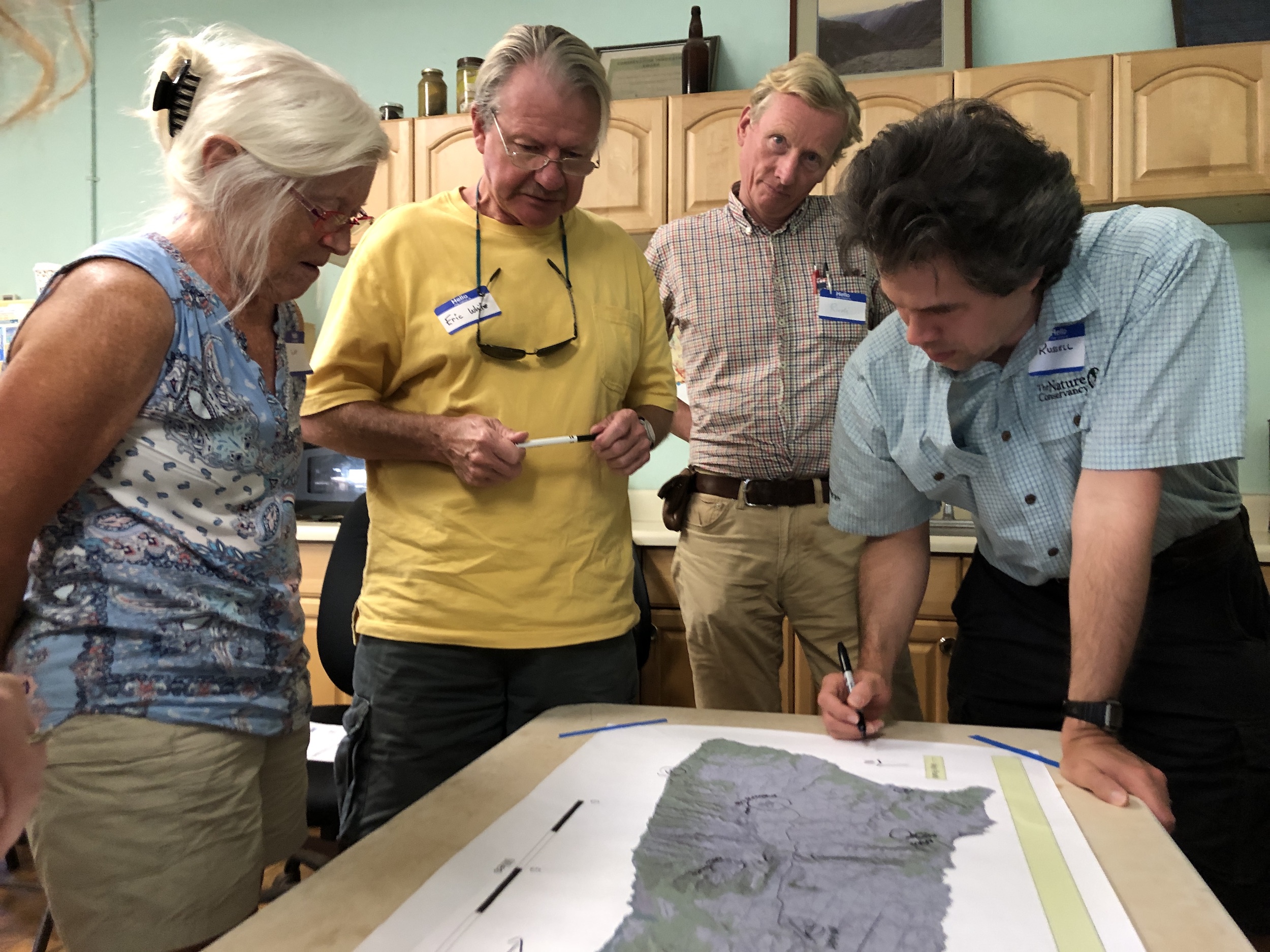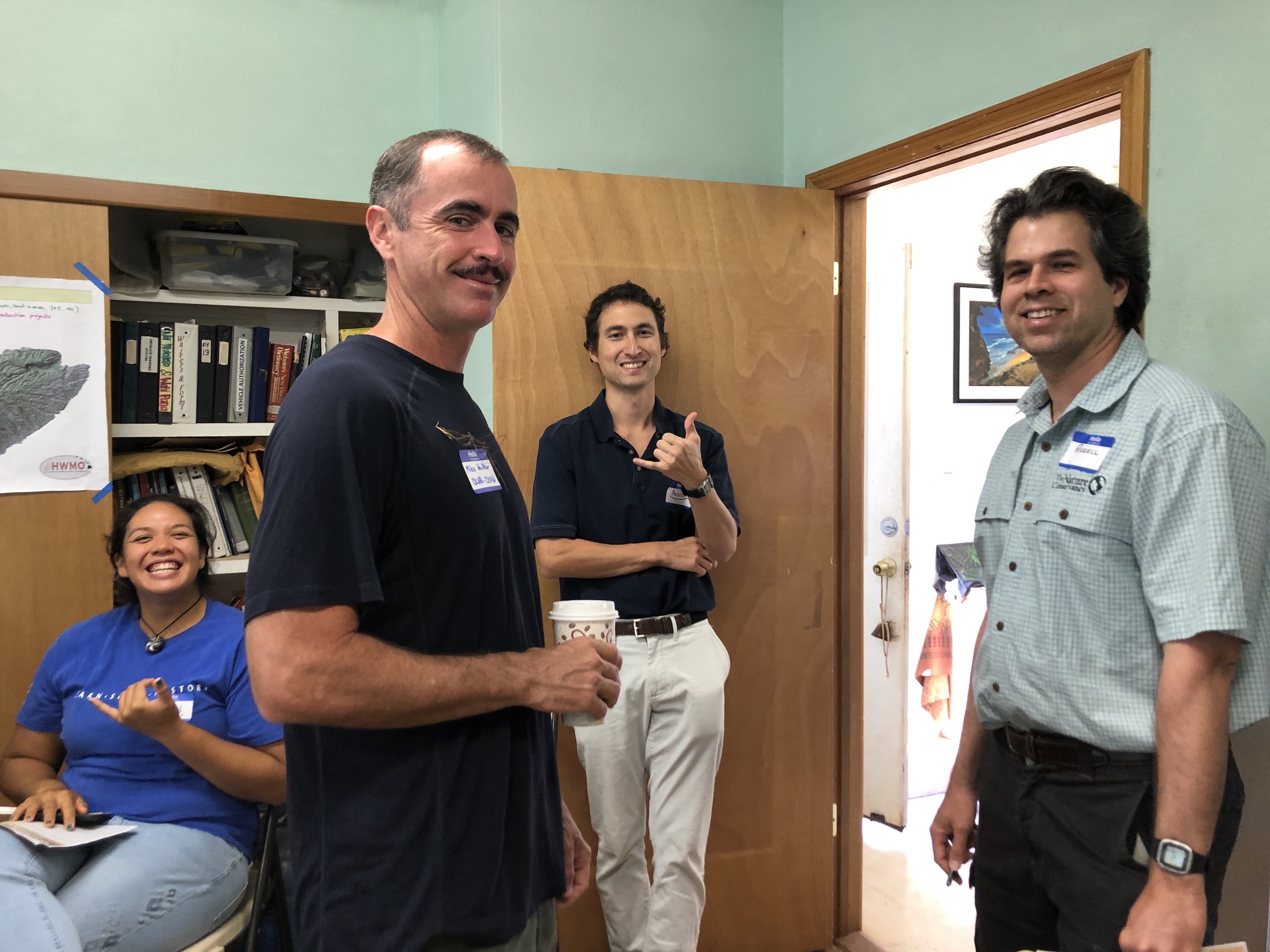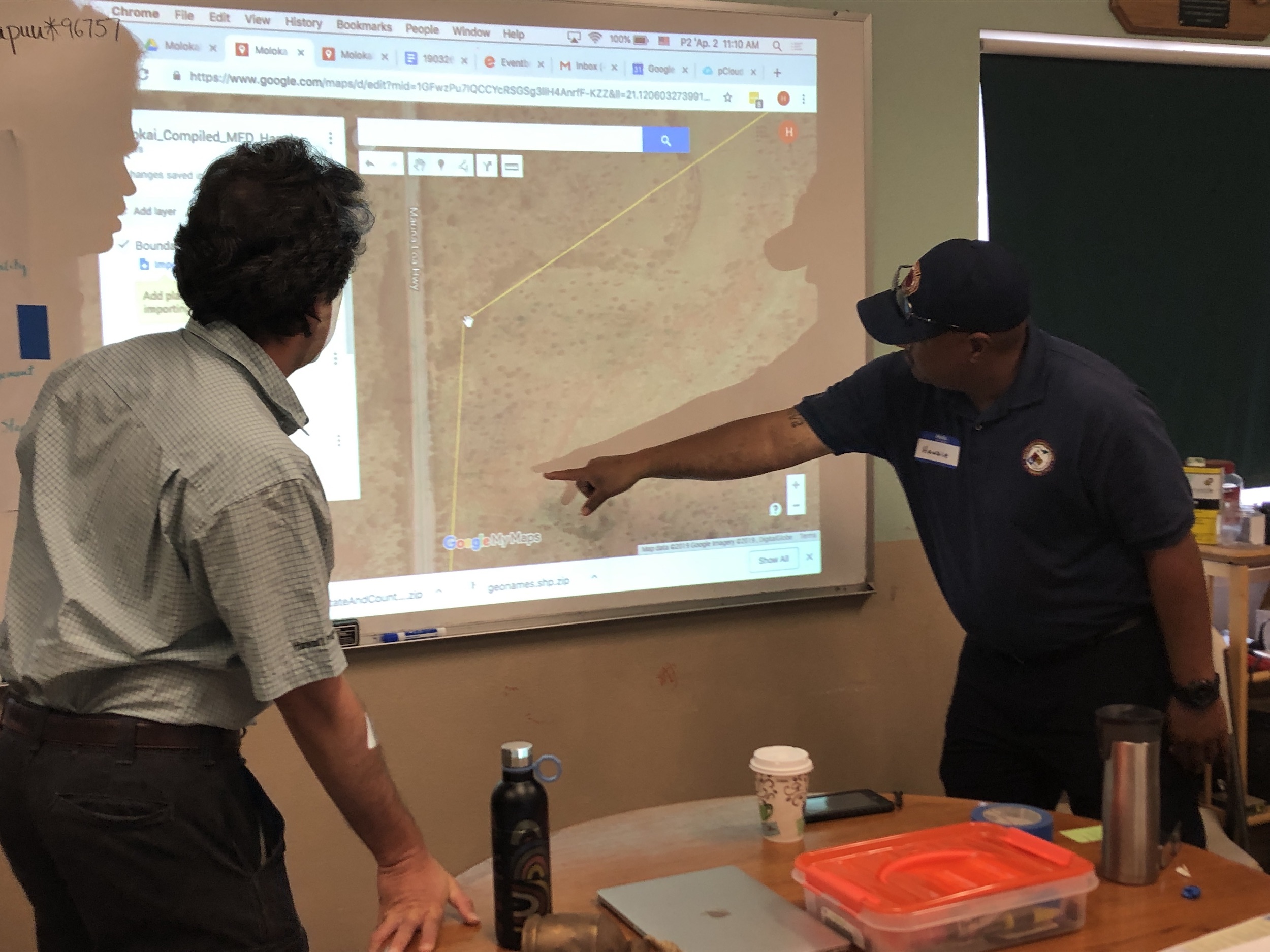This past Monday, HWMO was fortunate to go to Kauai and be a part of an annual brushfire meeting held at the Kauai Fire Department Fire Prevention Bureau. This extremely educational event brought in members of the Kauai County Fire department, landowners, and businesses alike to discuss the status of wildfires on Kauai, the current risk level, and how the Kauai community could manage these risks.
Some findings that were presented were astounding. According to Kevin Kodama, Senior Service Hydrologist at the National Oceanic and Atmospheric Administration (NOAA), 2019 is already on track to be one of riskiest years yet in terms of wildfires as the dry season is already well ahead of the average drought cycle. This year has been identified as a “weak El Niño.” Rain has come down in large volumes at times, feeding the fire-prone brush that ignites very easily. These “leaky” phases of a weak El Niño do not last long and instead, long periods of dry conditions can persist, leaving many areas under “red flag” wildfire conditions (especially when winds pick up and humidity drops).
Elizabeth Pickett, Executive Director of HWMO presented our Vegetation Management Mapping Project at the meeting, as well. She did an amazing job showing the community what we have been able to create over the past few years. After working with over 200 large landowners to record different land areas, we have put together maps displaying management of wildfire fuel throughout the State of Hawaii. It was extremely beneficial to the greater community to learn about whether certain regions of vegetation are being managed, and how they are being managed to prevent wildfires. This information will also help landowners track down funding and knowledge to better manage these areas that have overgrown vegetative fuels. HWMO is proud of the fact that we are helping communities become more knowledgeable and prepared to prevent costly disasters from occurring.


































